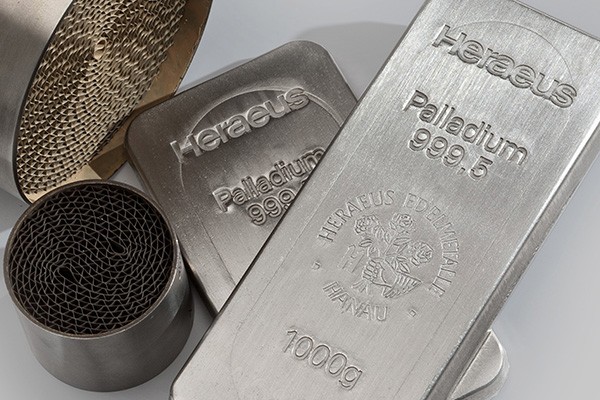Physical Address
304 North Cardinal St.
Dorchester Center, MA 02124

Palladium, a silvery-white metal known for its luster and utility in various industries, has steadily climbed the price charts over the years. As of recent, the cost of palladium has reached unparalleled heights, leaving many to wonder: why is palladium so expensive?
1. Rarity of the Metal
Palladium belongs to the platinum group metals (PGMs) alongside elements like platinum, rhodium, and others. These metals share certain similarities, but palladium stands out due to its relative rarity. The Earth’s crust contains very minimal quantities of palladium, making its mining and extraction a challenging endeavor.
2. Rising Demand in the Automobile Industry
A significant reason for palladium’s soaring prices is its extensive use in the automobile industry. Palladium is a primary component in catalytic converters, devices used to reduce harmful emissions from vehicles. As environmental regulations become more stringent globally, the demand for efficient catalytic converters, and subsequently palladium, has surged.
3. Limited Geographic Distribution
The bulk of palladium mining occurs in just a few locations around the world, primarily in Russia and South Africa. This limited geographic distribution means that any disruptions—be it political, economic, or environmental—in these regions can lead to substantial supply chain disturbances and price fluctuations.
4. Diverse Industrial Applications
Beyond automobiles, palladium finds applications in various industries. Its properties, including corrosion resistance and the ability to absorb vast amounts of hydrogen, make it invaluable in electronics, dentistry, and even jewelry. This diversified demand adds another layer of pricing pressure.
5. Investment and Speculation
Like gold and silver, palladium is now viewed as a store of value. Investors turn to palladium as a hedge against economic uncertainties. This investment interest, coupled with speculative activities, can lead to volatility and sometimes inflate the metal’s price beyond its industrial demand.
6. Mining and Extraction Costs
The process of mining and extracting palladium is not just about locating the metal in the Earth’s crust. The extraction processes are intricate, energy-intensive, and often involve treating large volumes of ore to obtain minimal quantities of palladium. These operational costs are directly passed on to the final price of the metal.
7. Substitution Challenges
One might wonder if industries could switch to cheaper alternatives. In many of its applications, especially in catalytic converters, palladium’s efficiency is unparalleled. Attempts to replace it with other metals, like platinum, have been explored, but they come with their own sets of challenges and inefficiencies.
8. Stockpile Depletions
In the past, when palladium prices spiked, industries would turn to stockpiles to cushion the price surge. However, as the metal’s demand has consistently outstripped its supply, these stockpiles have diminished, leaving industries at the mercy of current market prices.
Conclusion
The high cost of palladium is a culmination of its rarity, escalating demand across multiple industries, and supply chain vulnerabilities. As the world continues to prioritize environmental solutions and as emerging technologies discover new applications for this unique metal, palladium’s value in the global market will likely remain robust. Whether you’re an investor, an industrialist, or simply a curious individual, understanding the intricacies behind palladium’s price is vital in today’s dynamic economic landscape.